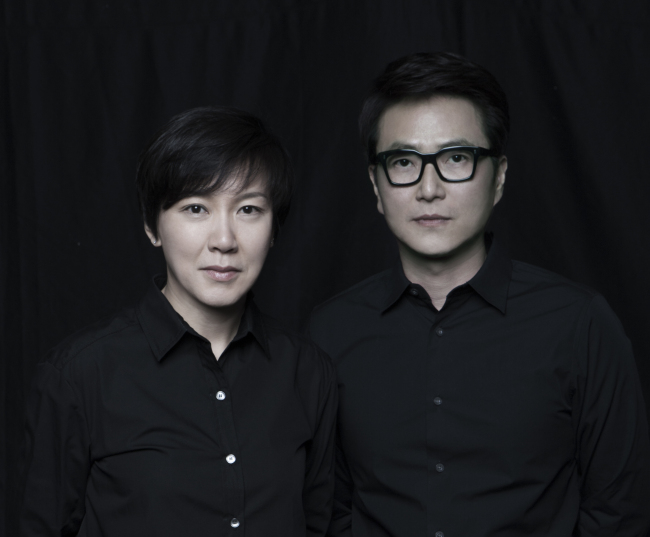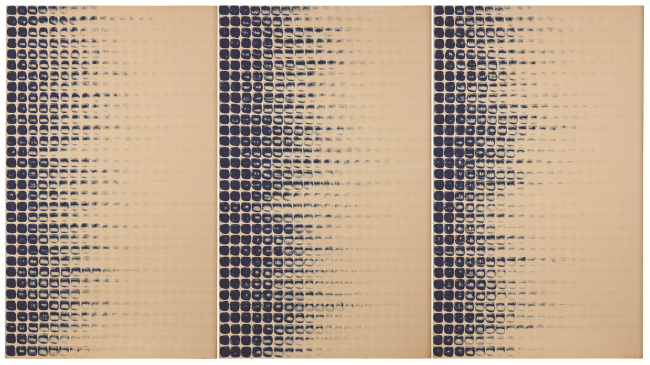The 56th Venice Biennale will begin its seven-month run next month, bringing some of the world’s greatest artists and emerging names to the floating city.
More than ever before, this year’s biennale will see a large number of Korean artists displaying their works.
In the main exhibition, to be curated by Nigerian biennale director Okwui Enwezor, works by three emerging Korean artists will be included ― the first Korean representation in six years.
More than ever before, this year’s biennale will see a large number of Korean artists displaying their works.
In the main exhibition, to be curated by Nigerian biennale director Okwui Enwezor, works by three emerging Korean artists will be included ― the first Korean representation in six years.

At the Korean Pavilion, duo Moon Kyung-won and Jeon Joon-ho will offer a glimpse into life after the end of the world with a video installation, while dozens of other Korean artists will present their works at various side events.
The exhibition at Korean Pavilion, dedicated to showcasing Korean art today, is titled “The Ways of Folding Space and Flying.”
The supernatural powers, explained curator Lee Sook-kyung, is perhaps what one needs to overcome the physical distance between Korea and Venice, or more fundamentally any physical environments that limit human thinking.
At the exhibition, the artists dare to question art after the end of the world. To tell their story, Moon and Jeon began with the very site the pavilion stands on. They assumed that the pavilion, which is located on the hill of Giardini Park, is the last remaining ground when the rest of the planet is submerged in water.
“The story is based on the question: Do we have a form of art when everything is gone?” said Lee, who is also a curator of the Tate Research Center.

To transform the exhibition place into the “the world after the end of world,” the artists came up with a seven-channel installation that covers the building’s round glass wall.
A video, 10 minutes and 30 seconds long, will be shown, starring a person presumed to be the last person on earth. The person, neither male nor female, conducts daily experiments, turning the pavilion into an isolated lab after the apocalypse.
The film was shot in Korea on a movie set that was created to look like the pavilion in Venice ― a way of folding the space.
“It will be interesting to experience the Korean Pavilion as an actual architectural place and the futuristic place based in the movie,” said Jeon, the artist.
All in all, the exhibit aims to provoke viewers to think about a fundamental question about art: What is art for and will there be art at the end of the world?”
“There’s no answer to the question. What matters is the question. It’s entirely up to the audience to find their own answers,” said Moon.
This year will see three emerging Korean artists featured in the international exhibition of the biennale, directed by biennale director Okwui Enwezor, under the title “All the World’s Future.
One of the artists includes filmmaker and media artist Im Heung-soon, whose documentary “Factory Complex” will be shown during the biennale. The film tracks the life of female blue collar workers and the female labor movement history of Korea.
The exhibition has yet to reveal what two other artists will show in the main exhibition, but an exhibition in Seoul offers a glimpse of the world of artist Nam Hwa-yeon ― the Arts Council Korea will hold the first solo exhibition of Nam in Korea, featuring video works of experimental performances, until June 28 at Arko Art Center.
In parallel to main exhibitions, the rising Korean dansaekhwa will be showcased.
Boghossian Foundation, the Brussel-based foundation that has funded diverse cultural projects, will present a group exhibition of dansaekhwa masters, in collaboration with Kukje Gallery in Seoul and Tina Kim Gallery in New York.
Curated by Lee Yong-woo, former president of the Gwangju Biennale Foundation, the exhibition is expected to show the development of dansaekhwa paintings over five decades, from the 1960s to today, at the historic 15th Renaissance palace Palazzo Contarini-Polignac from May 7 to Aug. 31.
More than a dozen Korean artists will also participate in group exhibitions held as collateral events or on fringe sites in Venice during the biennale.
The 56th Venice Biennale will run from May 9 to Nov. 22.
By Lee Woo-young (wylee@heraldcorp.com)


















![[Today’s K-pop] Treasure to publish magazine for debut anniversary](http://res.heraldm.com/phpwas/restmb_idxmake.php?idx=642&simg=/content/image/2024/07/26/20240726050551_0.jpg&u=)